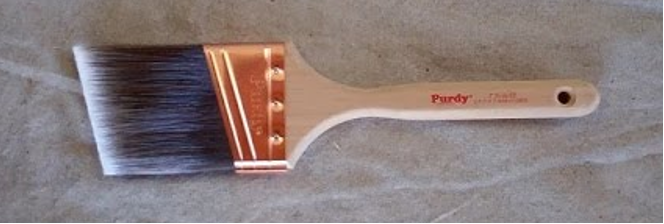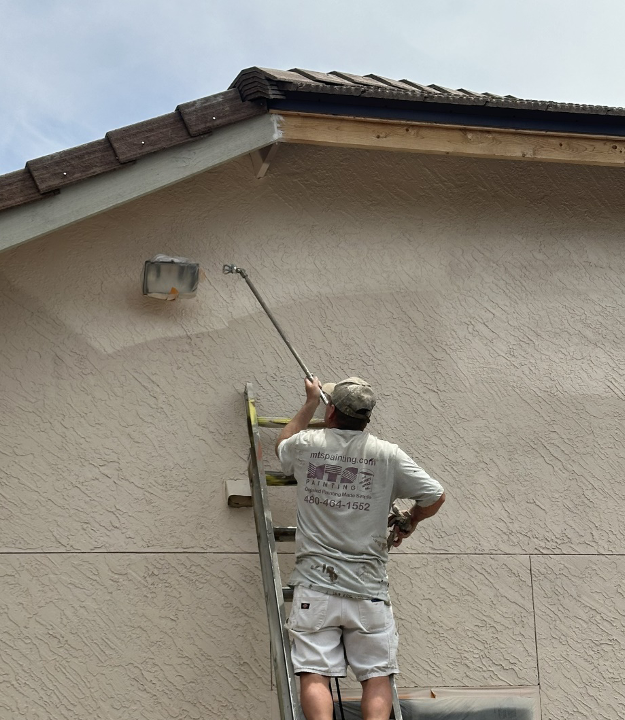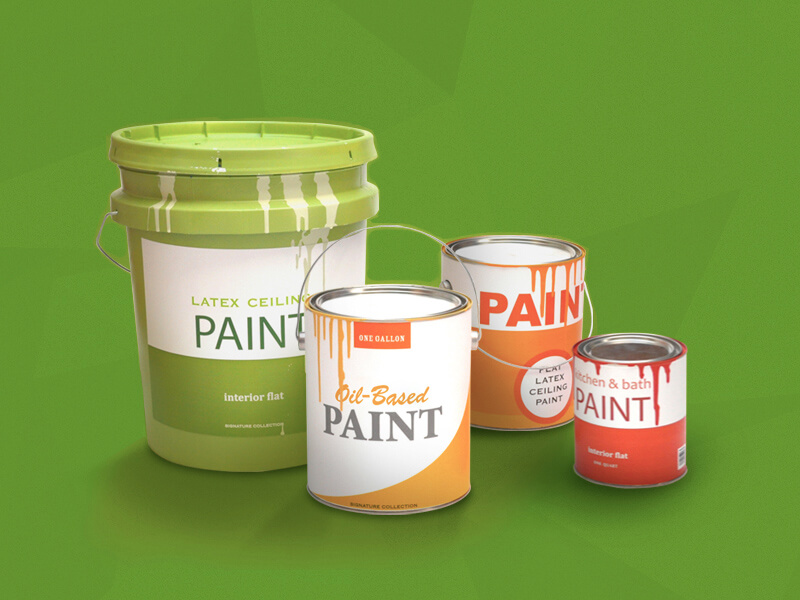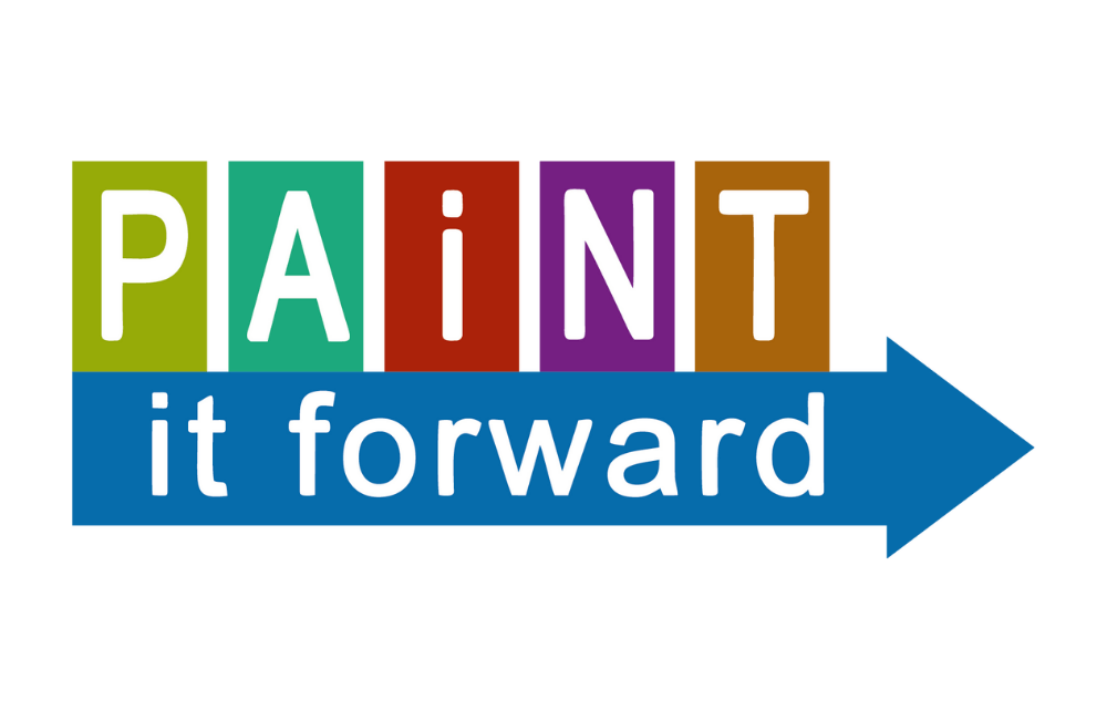Keywords: prep, painting tools
It’s the lead-up to summer in Mesa. Perhaps you’re thinking about taking on a home-improvement project before the worst of the summer heat. There is a simple satisfaction that comes from planning a project and doing it well. When it comes to house painting, avoiding common mistakes can make a significant difference in achieving a professional-looking finish and how much you enjoy the project. Here are some pitfalls to steer clear of.
Skipping the Prep
I’ve often heard professional painters say that the prep work is half of the job. I suspect that it’s more than half. Neglecting proper preparation is a big mistake. In my world of professional painting, skipping prep doesn’t save money. It always costs the company, since we will be called back to fix the problems caused by improper painting procedures.
As you can imagine, we spend a lot of time and effort to properly train our apprentice painters. They first work on learning to do the job the right way. Then, they learn how to work faster. Apprentices can go days at a time without ever holding a paint brush or spray gun in their hand. Instead, they wire brush and scrape, mask, patch, sand, rake gravel away from the foundation, move furniture, remove wall switch plates, and light fixtures. The journeyman painter may help and direct, but he does the paint application most times. Then, the apprentice puts everything back in place and cleans up the jobsite.

It would be nice to have your own apprentice when you do your home painting projects. But since you don’t, the responsibility for proper preparation rests on your shoulders. The first step is to move what can be moved out of harm’s way. Then, cover everything that can’t be moved so that you don’t get paint where you don’t want it. Clean the surfaces to be painted, patch holes, fill cracks, and sand it all smooth. Use the proper primer where necessary. Now you can paint.
When the paint dries, remove all the tape, masking and drops. Replace all the switch plates and fixtures. Replace furniture and other items that were moved. Finally, stand back and appreciate a job well done.
Skimping on Tools
I love painting with a new paint brush. If I could, I would start each project with new brushes. But that’s not practical because it would be too expensive. That’s why professional painters take excellent care of their brushes and all the other tools. They use their equipment over and over again.

That’s one reason to buy quality equipment – because it will hold up to multiple uses and cleanings. Another reason to insist on quality tools is because they will deliver a superior finish. Cheap tools can result in poor finishes, streaks, and brush marks. A good practice is to use the brushes and rollers that are recommended by the paint manufacturer. You can find this information on the paint can label or you can ask the expert at your favorite paint store.
We use several different electric and gas-powered paint sprayers. Because they are expensive, we do proper maintenance on them, particularly cleaning them thoroughly after each use. There are many less expensive sprayers that target the do-it-yourselfer.

These devices are capable of doing a fine job. But just like with the pros, maintain, and thoroughly clean your sprayers. While pros paint daily, most homeowners will finish a project and put their painting equipment in the garage or tool shed for months or longer. Don’t put them away dirty.
Refer to Painting Pointers from Our Master Painter on our website for a few equipment tips.
Not Buying Enough Paint or Buying Too Much Paint
Having been in the painting business for decades, I’ve had jobs where I did not get the correct amount of paint. I don’t like having too much or too little. I hate to have crew members who are on the clock stand around waiting for someone to deliver more paint so they can finish the job. Time is money after all. On the other hand, I hate it when I see the crew, at the end of the job, bringing gallons of leftover paint back to the shop because we overestimated the project. Those are gallons of paint that we won’t be able to use, especially if it was not a typical color. Wasted paint is wasted money. And many times, homeowners only want a gallon of touch up paint, not a 5-gallon bucket to store.

Homeowners taking on a painting job can face the same problems, just on a smaller scale. If you run short of paint, you will have to leave the project to make an emergency run to the paint store for another gallon.
Depending on time and location, you may have to clean your equipment before you head for the store, which can be very inconvenient.
If you finish the project with more than a gallon, you’ve wasted money, and you will end up storing paint that may never be used.
Sloppy measurements and guesswork will get you in trouble. The prudent thing to do is to take accurate measurements of the surfaces you will be painting. Then consult with the experts at your paint store. They will help you purchase the right amount of paint almost every time.
If you enjoy painting projects, avail yourself of good advice from friendly paint store clerks and spoil yourself with quality tools. However, if you don’t enjoy painting, give us a call. We would love to paint your house for you.


